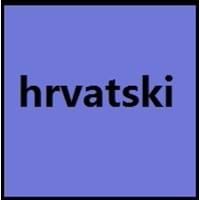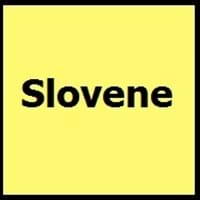Countries
Austria, Bosnia, Croatia, European Union, Herzegovina, Italy, Montenegro, Romania, Serbia
European Union, Slovenia
National Language
Austria
Austria, Croatia, Hungary, Italy, Slovenia
Second Language
Not spoken in any of the countries
Not spoken in any of the countries
Speaking Continents
Europe
Europe
Minority Language
Austria, Hungary, Italy, Montenegro, Romania
Austria, Hungary, Italy
Regulated By
Institute of Croatian Language and Linguistics
Slovenian Academy of Sciences and Arts
Interesting Facts
- In croatian language, everywhere there are words without vowels.
- Though croatian language was born in 9th century, the first written document in croatian was in 11th century.
- The Freising Monuments is the oldest preserved records of written Slovene from 10th century.
- The first Slovene book was printed in 1550.
Similar To
Serbain and Bosnian
Serbo-Croatian
Derived From
Church Slavonic
Not Available
Alphabets in
Croatian-Alphabets.jpg#200
Slovene-Alphabets.jpg#200
Writing Direction
Left-To-Right, Horizontal
Left-To-Right, Horizontal
How Are You?
kako si
Kako se imate?
Good Night
laku noć
Lahko noč
Good Evening
dobra večer
Dober večer
Good Afternoon
dobar dan
Dober dan
Good Morning
dobro jutro
Dobro jutro
Sorry
Oprostite
Oprostite
I Love You
Volim te
Ljubim te
Excuse Me
Ispričavam se
Oprostite
Dialect 1
Chakavian
Prekmurje Slovene
Where They Speak
Croatia
Hungary, Slovenia
Dialect 2
Chakavian
Resian
Where They Speak
Croatia
Italy
Dialect 3
Shtokavian
Styrian
Where They Speak
Bosnia and Herzegovina, Serbia, Croatia, Hungary, Romania
Slovenia
How Many People Speak
Not Available
Speaking Population
Not Available
Second Language Speakers
Not Available
Native Name
hrvatski
Not available
Alternative Names
Hrvatski
Slovenian, Slovenscina
French Name
croate
slovène
German Name
Kroatisch
Slowenisch
Pronunciation
[xř̩ʋaːtskiː]
[slɔˈʋèːnski ˈjɛ̀ːzik], [slɔˈʋèːnʃt͡ʃina]
Ethnicity
Croats
Slovenes
Origin
9th century
972-1093
Language Family
Indo-European Family
Indo-European Family
Subgroup
Not Available
Not Available
Branch
Not Available
Not Available
Early Forms
No early forms
No early forms
Standard Forms
Pluricentric Standard Serbo-Croatian
Slovene
Language Position
Not Available
Signed Forms
Croatian Sign Language
Not Available
Scope
Individual
Individual
ISO 639 6
Not Available
Not Available
Glottocode
croa1245
slov1268
Linguasphere
part of 53-AAA-g
53-AAA-f
Language Type
Living
Living
Language Linguistic Typology
Not Available
Not Available
Language Morphological Typology
Fusional, Synthetic
Fusional
All Croatian and Slovene Dialects
Most languages have dialects where each dialect differ from other dialect with respect to grammar and vocabulary. Here you will get to know all Croatian and Slovene dialects. Various dialects of Croatian and Slovene language differ in their pronunciations and words. Dialects of Croatian are spoken in different Croatian Speaking Countries whereas Slovene Dialects are spoken in different Slovene speaking countries. Also the number of people speaking Croatian vs Slovene Dialects varies from few thousands to many millions. Some of the Croatian dialects include: Chakavian, Chakavian. Slovene dialects include: Prekmurje Slovene , Resian. Also learn about dialects in South American Languages and North American Languages.
Croatian and Slovene Speaking population
Croatian and Slovene speaking population is one of the factors based on which Croatian and Slovene languages can be compared. The total count of Croatian and Slovene Speaking population in percentage is also given. The percentage of people speaking Croatian language is 89.00 % whereas the percentage of people speaking Slovene language is Not Available. When we compare the speaking population of any two languages we get to know which of two languages is more popular. Find more details about how many people speak Croatian and Slovene on Croatian vs Slovene where you will get native speakers, speaking population in percentage and native names.
Croatian and Slovene Language Codes
Croatian and Slovene language codes are used in those applications where using language names are tedious. Croatian and Slovene Language Codes include all the international language codes, glottocodes and linguasphere.





